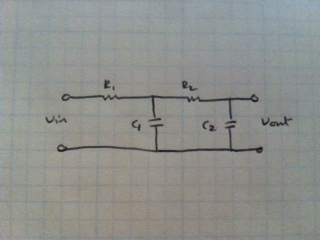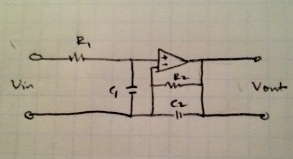Lonari
Newbie level 6
Hi guys,
I need to design a low pass filter with a cuttoff frequency of approx 5kHz. Problem is that it must have a -40dB/decade roll-off rate. So it has to be second order.
I can do f_c= 1/2*pi*RC
R=330 Ohms
C=0.1 uF
to get the first order filter with approximately 4800Hz cuttoff freq.
I believe a second order will give -40dB/decade? how do I go about doing this? I believe the equation for the second order is fc=1/2*pi*sqrt(r1*c1*r2*c2); No sure how to find the Rs and the Cs for this. Thanks in advance!
I need to design a low pass filter with a cuttoff frequency of approx 5kHz. Problem is that it must have a -40dB/decade roll-off rate. So it has to be second order.
I can do f_c= 1/2*pi*RC
R=330 Ohms
C=0.1 uF
to get the first order filter with approximately 4800Hz cuttoff freq.
I believe a second order will give -40dB/decade? how do I go about doing this? I believe the equation for the second order is fc=1/2*pi*sqrt(r1*c1*r2*c2); No sure how to find the Rs and the Cs for this. Thanks in advance!

